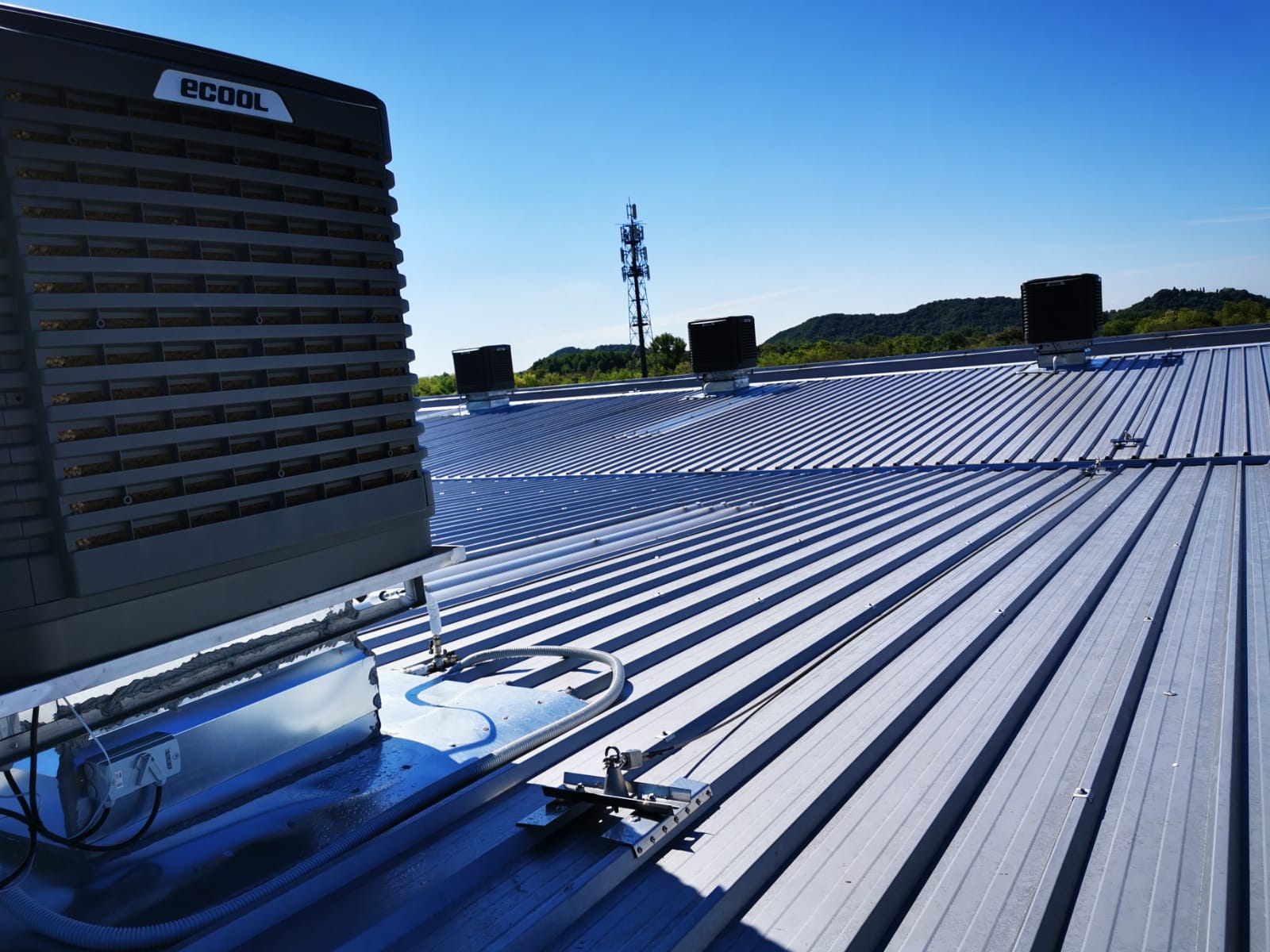
When the adiabatic system does not seem convincing
It sometimes happens, in our work, that we are contacted by companies that have doubts on the real performance of evaporative adiabatic coolers but still need to improve the microclimate in their premises.
In these cases, we need to clearly illustrate each aspect, with all its benefits and limitations, and the reasons that can lead to the unsatisfactory performance of a cooling system, in order to be able to deal with them, address them and possibly solve them at the design stage.
We have already discussed the operating principle of evaporative adiabatic coolers in a previous article in this magazine. On that occasion, we explained how the inflow of fresh air from the outside, and its cooling due the transfer of heat to water flowing over a perforated honeycomb panel, take place at the top of the area to be cooled.
The position and flow rate of the coolers must be precisely defined to optimise benefits
For example, we can also offer fixed evaporative adiabatic coolers to be installed on the roofs of industrial sheds or warehouses. In this way, coming in from the top, the cooled air naturally flows downward to the lower sections of the environment being treated, which is precisely where the workers who will benefit from the new established microclimate are located.
However, the choice of cooler positioning and flow rate requires very careful consideration. It must take into account several design aspects that are sometimes overlooked and make the systems inefficient.
In this situation, there is the risk of creating an industrial evaporative adiabatic cooling system that does not achieve the intended purpose; to prevent and avoid these issues, Art-Eco devotes the utmost attention to the design of its systems.
Are you interested in more information
on evaporative cooling
Designing industrial cooling systems
Each industrial working environment has very specific characteristics: not only does the height of the roof have a great impact on the efficiency of adiabatic coolers, but in every industrial shed or production department we can find machines that produce significant amounts of localised heat, alternating with other areas in which, on the other hand, no significant heat load is generated. In addition, the sector in which the company operates, its industrialisation characteristics and the number of natural air outlets also impact on the design of the system and the ability to identify the best solutions. The design of a cooling system must necessarily start from a series of structural data regarding the working environment to be treated; these are collected directly on site and form the specifications thanks to which experienced professionals and designers in the field will identify the type of machines to be used and their correct positioning.
Art-Eco has always given a lot of importance to the correct design of the cooling system, because it is well aware that this is a key moment for the success of the whole operation. Only through a well-structured design, in which the customer is involved from the outset, will it be possible to meet the needs expressed and address, with the unique data that each situation offers, all the critical issues that arise as the activities develop.
The system must be based on structural data, the characteristics of the environment and the type of activity being carried out
Addressing all critical system design issues
As already indicated, Art-Eco is sometimes contacted by companies who require an evaporative adiabatic cooling system in their factory or warehouse, but are uncertain if it will really work. These doubts often arise from the actual complexity of all factors involved. It is therefore necessary to carry out an in-depth project assessment in order to provide the customer with a solution that will allow the installation of a system that fully meets the requirements, whilst keeping the financial commitment as low as possible.
We follow a method consolidated over the years, which entails constant contact with the customer in order to gather all the necessary information. An in-depth understanding of the specific issues and requirements of the company allows us to create an “ad hoc” cooling system that can best meet the needs.
Our work, however, does not end with the installation of the coolers: it continues with a series of after-sales services that are usually highly appreciated by our customers, which will, among other things, help to extend the life of our equipment as long as possible.
Art-Eco strongly believes in evaporative cooling as a method of achieving the best microclimate in industrial workplaces, to preserve the psychophysical well-being of workers, while at the same time ensuring cost-effective and environmentally friendly operation. Also for this reason, we tackle with conviction all the problems and doubts that may arise regarding the installation of an industrial cooling system, in order to give our customers the maximum support. The primary objective is always the same: to have a system capable of making the working conditions inside industrial sheds, warehouses and production departments more pleasant, to improve the well-being of the operators and their productivity, therefore achieving success in all company policies.

